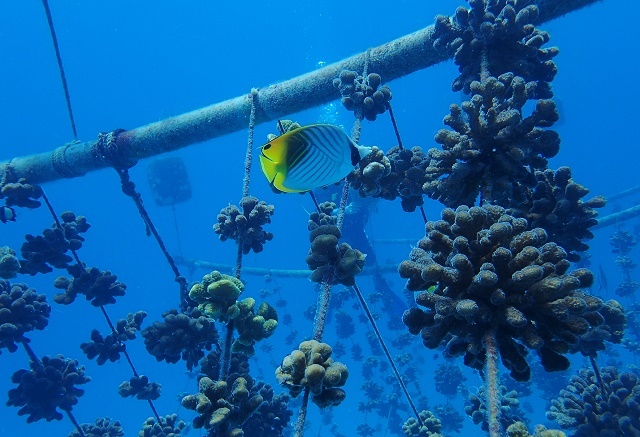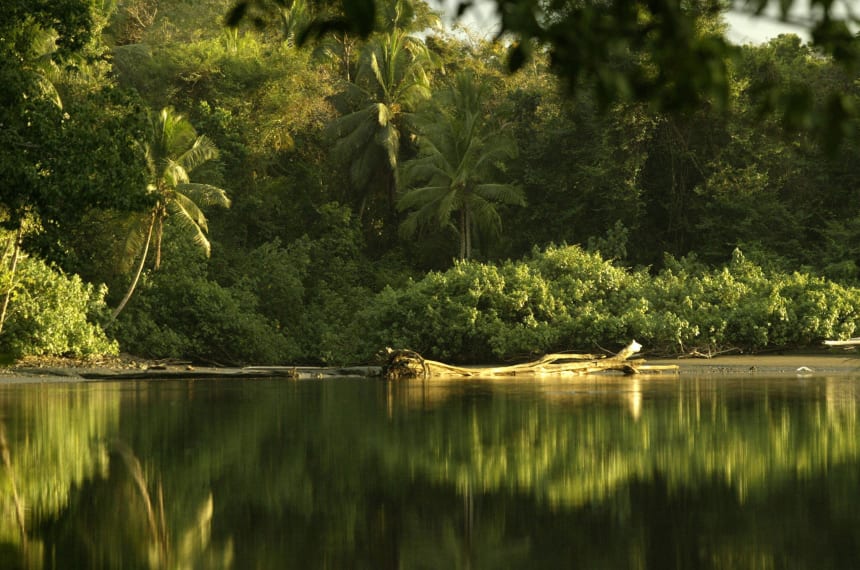Locals seek help to save Pulau Kukup National Park 
MALAYSIA – Established in 1997 under the National Parks (Johor) Corporation Enactment 1989, the 647.5-ha Pulau Kukup National Park protected the second largest mangrove island in the world. The park, which was an integral component of Malaysia’s protected area network, is also of global conservation significance. It was designated as a Wetlands of International Importance (Ramsar site) in 2003 and forms the heart of the Southwest Johor Coast Important Bird Area (IBA) that was designated in 2004. The withdrawal of legal protection will pave the way for large scale development of the island. This is likely to cause the loss of biodiversity and critical ecosystem services, with detrimental impacts at the local, national and global levels. At the local level, for example, our fish stock will be affected, as mangroves are breeding grounds for many commercial fish species. On the global scale, it will contribute towards climate change, since mangroves are important carbon sinks (more carbon is stored in mangroves than most other habitats, including dipterocarp forests).
Sign The Petition AFRICA
Restoring Ghana’s Mangroves and Depleted Fish Stock

GHANA – It was just three and a half years ago that the Sanwoma fishing village, which sits between the sea and the mouth of the Ankobra River on the west coast of Ghana, experienced perpetual flooding that resulted in a loss of property and life. This was because the local mangrove forests that play a key role in combating the effects of coastal erosion and rising sea levels had been wantonly and indiscriminately harvested. “Of a total 118-hectares mangrove, we had depleted 115 hectares,” Paul Nato Codjoe, a fisherman and a resident of the community explains. The fisherfolk here depended heavily on the Ankobra wetland mangroves for cheap and available sources of fuel for fish processing. Wood from the mangroves was also used as material for construction, and sold to generate income. But a video shown by officials of Hen Mpoano (HM), a local non-governmental organisation, helped the community understand the direct impact of their indiscriminate felling. And it spurred the fishfolk into action. Led by Odikro Nkrumah, Chief of the Sanwoma, the community commenced a mangrove restoration plan, planting about 45,000 seeds over the last three years. READ MORE
Coral reef restoration toolkit provides guidance on ‘coral gardening’ strategy

SEYCHELLES – A new toolkit on coral reef restoration has been released by Nature Seychelles, an NGO. The guidance is based on a large-scale coral reef restoration project – called Reef Rescuers – carried out by Nature Seychelles over the past eight years. The toolkit describes how to complete a coral reef restoration project using ‘coral gardening’. This technique takes fragments of corals that have withstood bleaching events and cultivates them for several months before transplanting them to restoration sites. The toolkit describes the protocol for this, and offers guidance on appropriate design, logistics, and execution, based on experience and field-tested methods. The Reef Rescuers project has raised over 40,000 coral fragments in underwater nurseries and transplanted over 24,000 of them onto a 5225-m2 area of degraded reef in Cousin Island Special Reserve, an MPA managed by Nature Seychelles. READ MORE
Omani researcher shows how mangroves fight climate change

OMAN – Zakiya Al Afifi, who is currently doing her PhD in environmental sciences from the University of York in the United Kingdom, is studying the role of nature and man coexisting alongside each other, and hopes to share her work with the authorities so they can use it to benefit the country. “Primarily a coastal tree, mangroves have several benefits to the environment, such as coastal erosion prevention and mitigating the effects of wave and storm energy,” said Al Afifi, speaking to the Times of Oman. “They also host species of both ecological and subsistence importance, for example in the case of fish. The research centred around identifying and highlighting the contribution of Al-Qurum and Quriyat mangroves to community well-being,” she added. “It also aimed at identifying the drivers of environmental change affecting these mangrove ecosystems such as storms and urbanisation, and providing recommendations for the sustainable management of mangrove forests at the national level in Oman.” READ MORE
ASIA
A development project in a Bali mangrove bay gets a new lease on life

INDONESIA – Four months after activists in Bali celebrated what they believed was the end of a controversial plan to develop part of the island’s mangrove-rich Benoa Bay, the scheme has been revived by the Indonesian government. In August, PT Tirta Wahana Bali Internasional (TWBI), a property development unit of Indonesian tycoon Tomy Winata’s Artha Graha conglomerate, lost its permit for an ambitious commercial and tourism development in Benoa Bay, an area that serves as a key source of livelihood for thousands of local fishermen. The permit granted the company control of an area spanning 700 hectares (1,730 acres), where it planned to build artificial islands for a multibillion-dollar complex featuring hotels, restaurants, entertainment venues and a convention center. That particular type of permit is automatically annulled if it isn’t renewed after four years. And that’s what happened to PT TWBI, which failed to receive government approval for a renewal. That stemmed from the environment ministry not approving the developer’s environmental impact assessment, known locally as an AMDAL, for its project plans. READ MORE
Ministry asks governors to focus on mangroves

CAMBODIA – In a bid to improve environmental protection, the Agriculture Ministry yesterday urged provincial governors along coastal areas to maintain mangrove forests within their jurisdictions. In a letter, Agriculture Minister Veng Sakhon informed the provincial governors of Kep, Preah Sihanouk and Koh Kong to be more attentive in preventing mangrove forests encroachment. “Land is being cleared to make houses and mangrove forests are being fenced off for ownership,” Mr Sakhon said in the letter. “The issuance of land titles have been noticeably happening.” “This practice of issuing land titles in mangrove forests is apparent in fishing communities such as ones in Preah Sihanouk province,” he added. The letter did not detail how many hectares of mangrove forests have been encroached upon. READ MORE
There's benefit in them mangroves

MALAYSIA – THE recent tsunami in Banten, Indonesia reminded us of the tsunami that happened exactly 14 years ago on Dec 26, which had devastated many countries bordering the Indian Ocean. Many villages on the northwest coast of Peninsular Malaysia, too, were badly affected, and most of the survivors are still being haunted by vivid memories of that catastrophic event. The 2004 catastrophe in one way drove home the lesson that Malaysia was not entirely safe from geological disasters. More importantly, the killer waves also taught us the importance of mangroves as they have been proven to blunt the destructive force of tsunamis. Realising this, Malaysia embarked on a mission to rehabilitate mangrove and coastal forests throughout the country’s coastlines. A special annual budget has been continuously allocated for this mission and many rehabilitated areas along the coasts have seen much improvement since the launch of the programme in 2005. The issue is, however, not only about the success of the rehabilitation programme, but also the legal protection and sustainability of the existing and the rehabilitated mangrove habitats. READ MORE
Island’s mangrove forests and folklore attract tourists

MYANMAR – To the locals, Pulau Kukup is precious. “There are not many tourist attractions in Pontian,” said seafood restaurant owner Rohaidah Wahab, 43. The island, she said, helped to attract Malaysian and foreign visitors. The Tourism Johor website adds a magical touch to Pulau Kukup, stating that it is “an island shrouded in legends of princesses and curses, or so the folklore says”. It also pointed out that Pulau Kukup is “one of the largest uninhabited mangrove forests in the world” and that it is home to an abundance of flora and fauna. Monkeys and mudskippers can be spotted from the boardwalk. According to Rohaidah, any move to de-gazette the place would become a “huge issue”. The state government, she said, should give some consideration to the people here. READ MORE
AMERICAS
An indigenous community rejects, then accepts, a protected mangrove area

GUATEMALA – Riding in a small motorboat along the Atlantic coast of Guatemala, Francisco Cuz Acal looked over his left shoulder at the lush forest cover whizzing by. To his right lay nothing but open water. Straight ahead, far off in the distance, he could just barely make out the Belizean coastline behind a misty haze. “There could arrive a time when none of this exists, and our kids who are growing up won’t see any of it if it all is destroyed,” said Cuz Acal, a Q’eqchi’ and vice president of La Guaira Cocolí’s local government. “That’s why it’s important to take care of it and maintain it, so that when they are older, they’ll know what nature is like, what the forest is like, and what the mountains are like.” Designating this site a multiple use area is supposed to ensure that Cuz Acal’s vision comes true. But he didn’t always see it that way. The local Q’eqchi’ initially opposed the designation, and vociferously, for fear it would infringe on their rights to the land. Over time, though, they grew to realize that it was helping ensure the future of the environment and their own community. More than a decade since the site was named a multiple use area, the relationship between the Guatemalan government and local communities is starting to settle into a symbiotic groove, and conservation initiatives, including efforts to decrease overfishing, empower forest guards and run ecotourism projects, are having a noticeable effect on the forests and wildlife. READ MORE
Half 0f Costa Rica's regrown forests are gone within two decades

COSTA RICA – Secondary forests—those that regrow naturally after being cleared or degraded—constitute more than half of existing tropical forests. When they are old enough, they support a wide range of species and store carbon at a higher rate than old-growth forest because the trees grow more rapidly. But in southern Costa Rica, a country with strong environmental commitments, young forests are ephemeral, a new study claims. When Leighton Reid, a restoration ecologist at the Missouri Botanical Garden in St. Louis, and his colleagues studied the history of secondary forests in a region of Coto Brus canton, Costa Rica, they found that half of them were re-cleared within 20 years. And within 54 years, 85 percent of these young forests were gone, the team reported recently in Conservation Letters. "I wasn't expecting this at all," says Reid, who has worked in Costa Rica for more than a decade studying tropical forest restoration. "I was shocked." READ MORE
EUROPE
New study looks at increasing the success and effectiveness of mangrove conservation investments

GERMANY – Mangroves are under threat globally due to land conversion, overexploitation, and other human-induced stressors. Various stakeholders, including governments and NGOs, have been working on the conservation and restoration of mangrove ecosystems for years, yet with mixed results. Lack of sustainable finance, beyond an initial project implementation cycle, is often cited as a reason for long-term project failure.A new report by the Save Our Mangroves Now! initiative, co-led by WWF-Germany and IUCN and supported by BMZ, provides guidance on making mangrove conservation investments more sustainable and impactful. As part of the study, the authors looked at the common successes and challenges linked to mangrove conservation and the business case for private sector to engage in conservation efforts.Mangroves provide valuable ecosystem services estimated to be worth thousands to tens of thousands of USD per hectare, and play an important role in climate change mitigation and adaptation.Investing in mangroves can deliver a number of environmental and social benefits. This is of great interest to governments wanting to reduce coastal damage and impact investors wanting to ‘do good’ while earning economic returns. READ MORE
OCEANA
Deep Seagrass Bed Could Stall Climate Change, If Climate Change Doesn't Kill It First

AUSTRALIA – Amid a sea of dire climate change news, researchers say they've found a rare bright spot. A meadow of seagrass among Australia's Great Barrier Reef — estimated to be twice the size of New Jersey — is soaking up and storing carbon that would otherwise contribute to global warming. Scientists call this carbon-removal powerhouse a "blue carbon sink." The term refers to an ocean or coastal ecosystem — including seagrasses, salt marshes and mangrove forests — that captures carbon compounds from the atmosphere, effectively removing carbon dioxide, a known greenhouse gas that contributes to climate change. "These coastal Blue Carbon ecosystems can sequester or remove carbon from the atmosphere about four times the rate of terrestrial forests on land, and they store about 10 times more carbon in the system itself compared to forest on land," says Jennifer Howard, director of marine climate change at Conservation International. READ MORE




























